Type 4s are intense, sensitive, and independent idealists.
Reading time: 5 minutes

Gregory Park, Ph.D.
Author
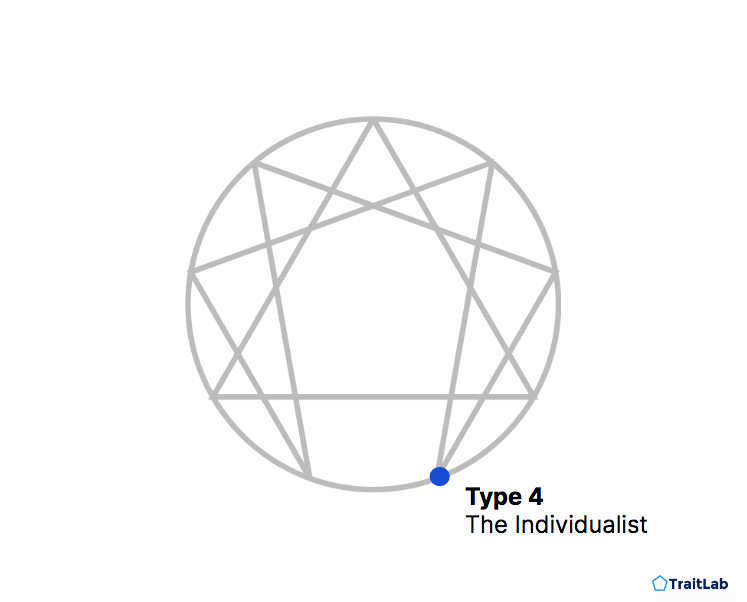
In the Enneagram framework, Type 4s — also known as Individualists or simply Fours — are intense, sensitive, and independent idealists.
Hook and colleagues (2021) describe Type 4s’ core desire as a need to be special. At their worst, Type 4s can overemphasize their individuality, leading to social alienation and difficulty connecting with other people.
This negative side emerges as a symptom of Type 4’s core fear of having no identity or significance.

Do you know your closest Enneagram type?
See how your personality compares to all nine types with TraitLab's comprehensive assessment.
Others might describe Type 4s as
The wordcloud below shows the top 100 words used to describe Type 4s. Bigger words describe the more prominent aspects of most Type 4s.
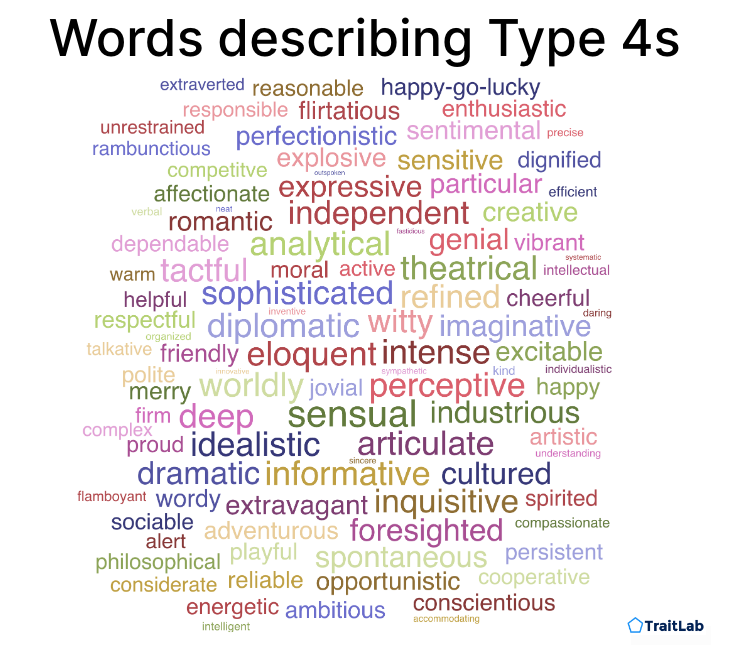
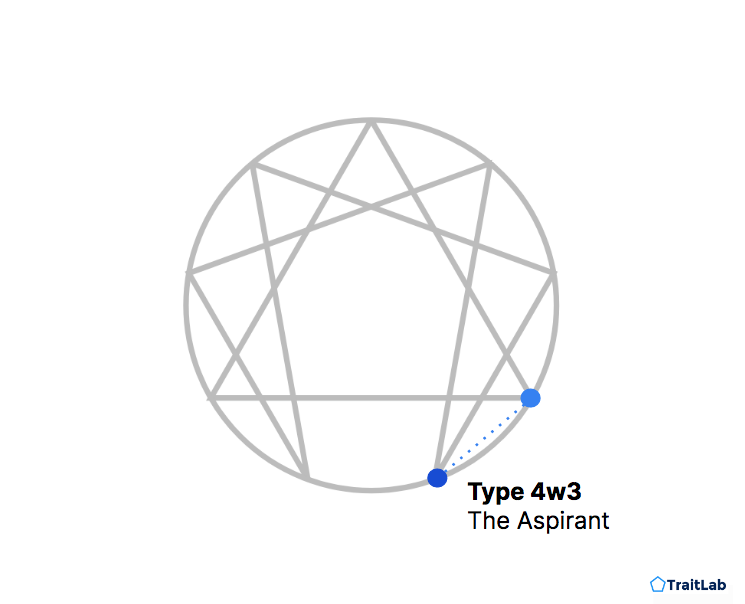
Type 4s with a 3 wing, or 4w3s, take on some characteristics of Type 3: The Achiever, including a stronger goal orientation and the need to be seen as successful by others. Type 4w3s are often searching for a creative way to channel their unique skills into the next big opportunity.
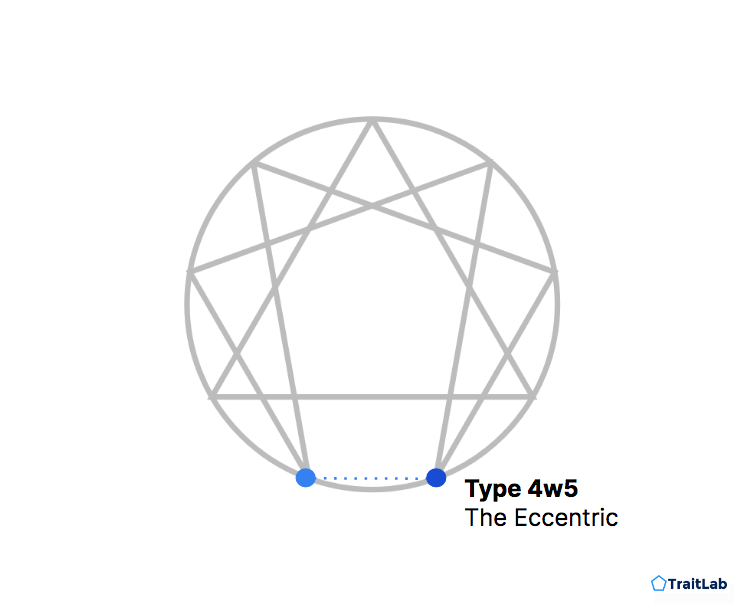
Type 4s with a 5 wing, or 4w5s, exhibit characteristics of Type 5: The Investigator. While Type 4w5s maintain the independent spirit and emotional sensitivity of Type 4s, they are less concerned about others’ perceptions of them. Type 4w5s will happily indulge in their personal passion projects and idiosyncratic, unconventional behaviors without caring too much about what others think.
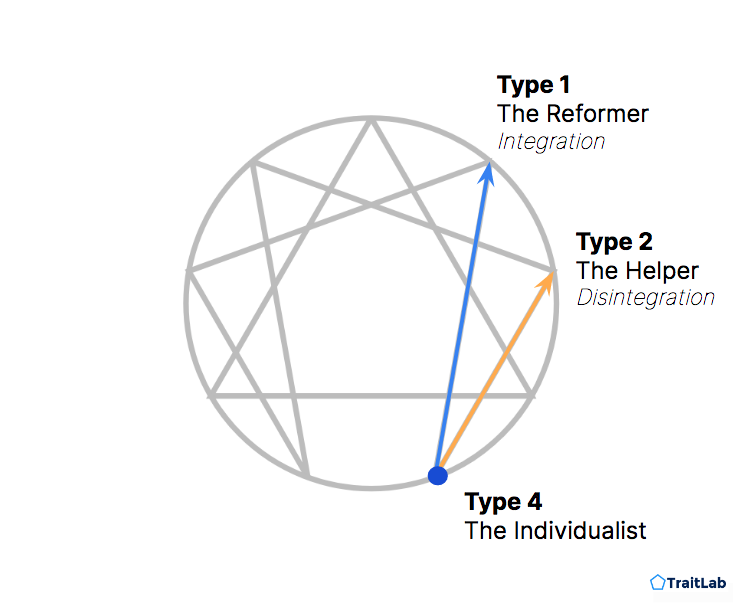
In times of health and security (i.e., integration), Type 4s shift towards Type 1: The Reformer. One indication of this change is greater self-discipline and organization. Healthy 4s appreciate that their unique talents and perspective alone are not enough. Instead, they embrace a stoic attitude, rein in their emotions, and learn to focus their energy on making genuine progress towards their long-term goals.
In times of stress (i.e., disintegration), Type 4s shift towards Type 2: The Helper. Following this shift, Type 4s have a stronger motivation to forge and nurture interpersonal relationships. Disintegrated Type 4s may be preoccupied with the status of their relationships and require frequent reassurances from partners, friends, and other connections.
Based on their distribution of personality traits, TraitLab estimates that roughly 6% of people would be classified as Type 4s.
In studies of personality structure, researchers often use a trait-based approach to describing the differences between people instead of personality types. The most well-established method is the Big Five, which describes differences along five broad dimensions:
Personality types are far less precise than getting exact Big Five measurements, but knowing your personality type can give you a rough idea of where you fall on each dimension.
In the graph below, each dot is a Type 4, placed by where they fall on the Big Five dimensions. You can see that Type 4s can vary quite a bit on any single dimension.
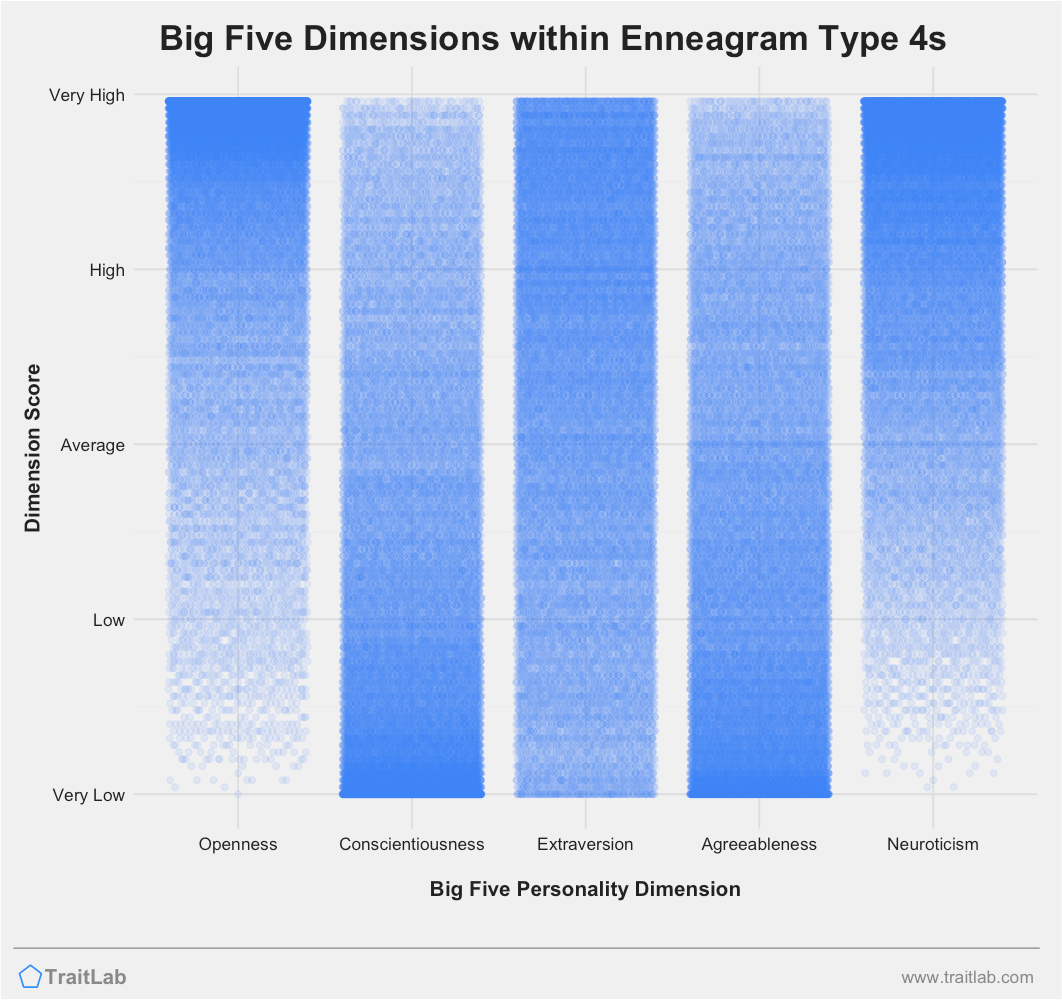
For example, on the Openness to Experience dimension, Type 4s tend to score much higher than average, so the High and Very High areas are very dark blue. However, there are still a few rare Type 4s on the low end of Openness to Experience.
Below, you can see more detail on how Type 4s score on each Big Five dimension.
As a group, Type 4s stand out in their unusually high Openness to Experience. Openness to Experience is related to preferences for novelty across all types of experiences.
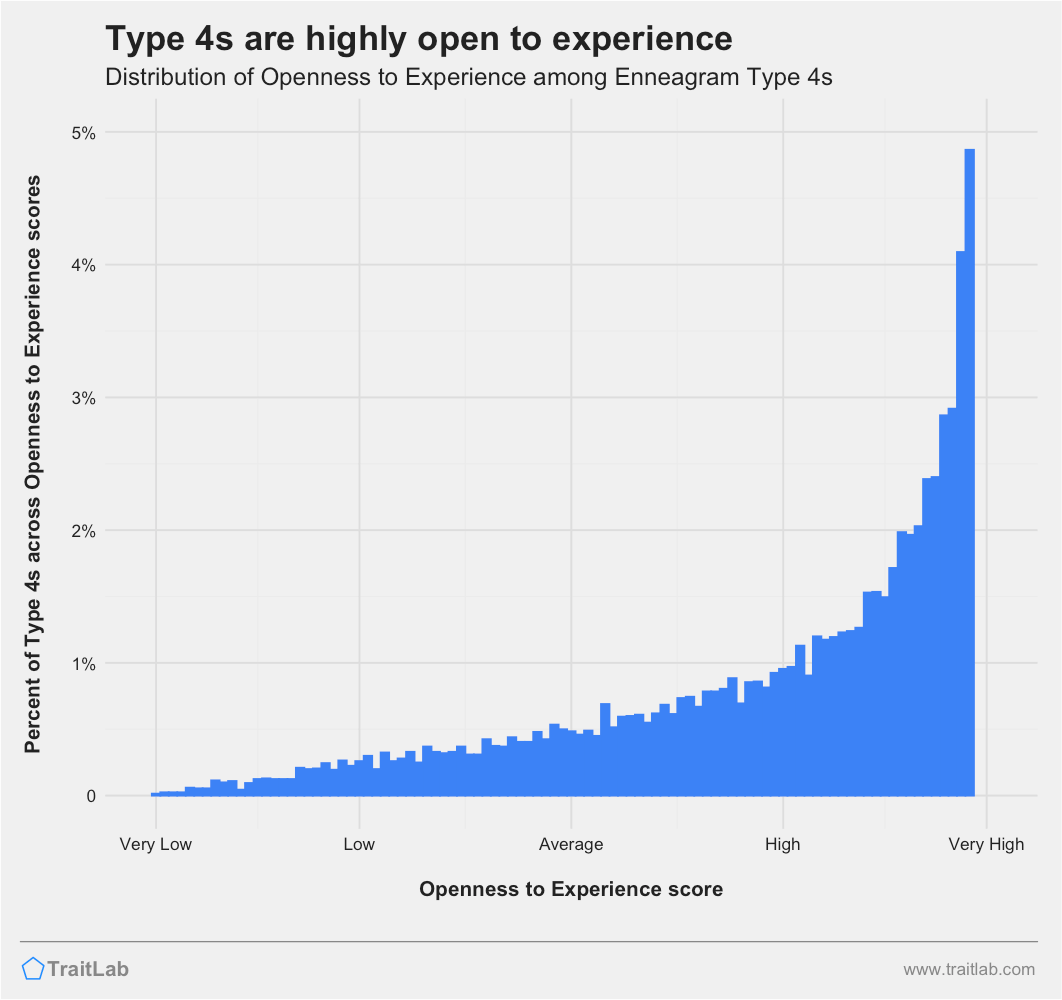
Like many Type 4s, highly open people tend to have diverse tastes in food, music, art, and literature, are intellectually curious, and often embrace unconventional habits, ideas, or beliefs.
Less open people prefer familiar ways of doing things. They are less interested in trying new things or seeking out new experiences. They also tend to be less eccentric and have more conventional tastes in hobbies, music, and reading material.
Conscientiousness describes one’s tendency to make detailed plans, be highly organized and systematic, and follow consistent, regular schedules.
The relatively low Conscientiousness of Type 4s means that they more readily accept chaos and irregularity, and they may actively avoid what they perceive as being too organized or systematic.
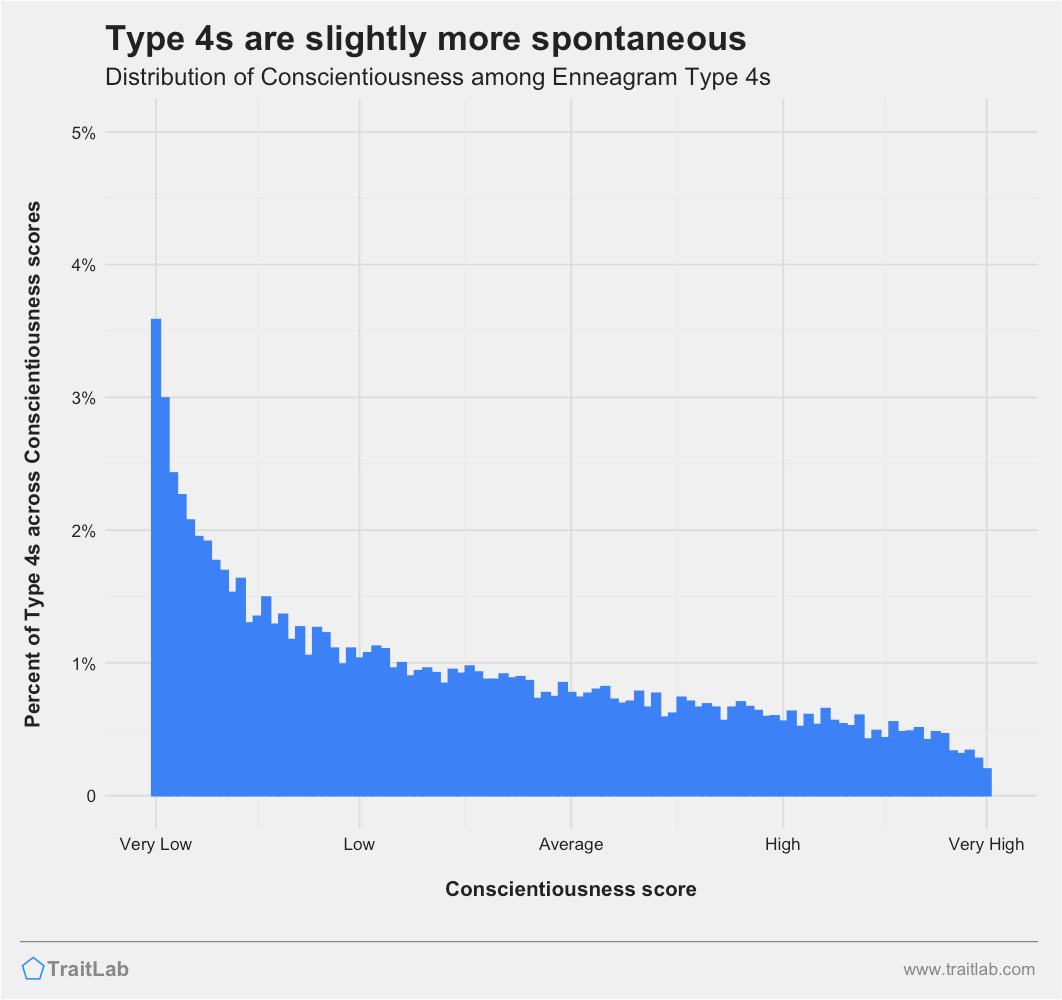
Type 4s are less likely to be highly focused and dedicated to a single long-term goal. Instead, they tend to act more impulsively, happily bounce between smaller, short-term projects and goals.
Lastly, Type 4s will feel less obligated to carefully follow widely accepted social norms, rules, and regulations in several areas of life. They may opt for an unconventional or even rebellious approach.
Type 4s vary widely on the Extraversion/Introversion spectrum. Some Type 4s are highly extraverted, others are highly introverted, and most are somewhere in between the extremes. In general, Extraversion describes one’s social enthusiasm, positive emotionality, and assertiveness.
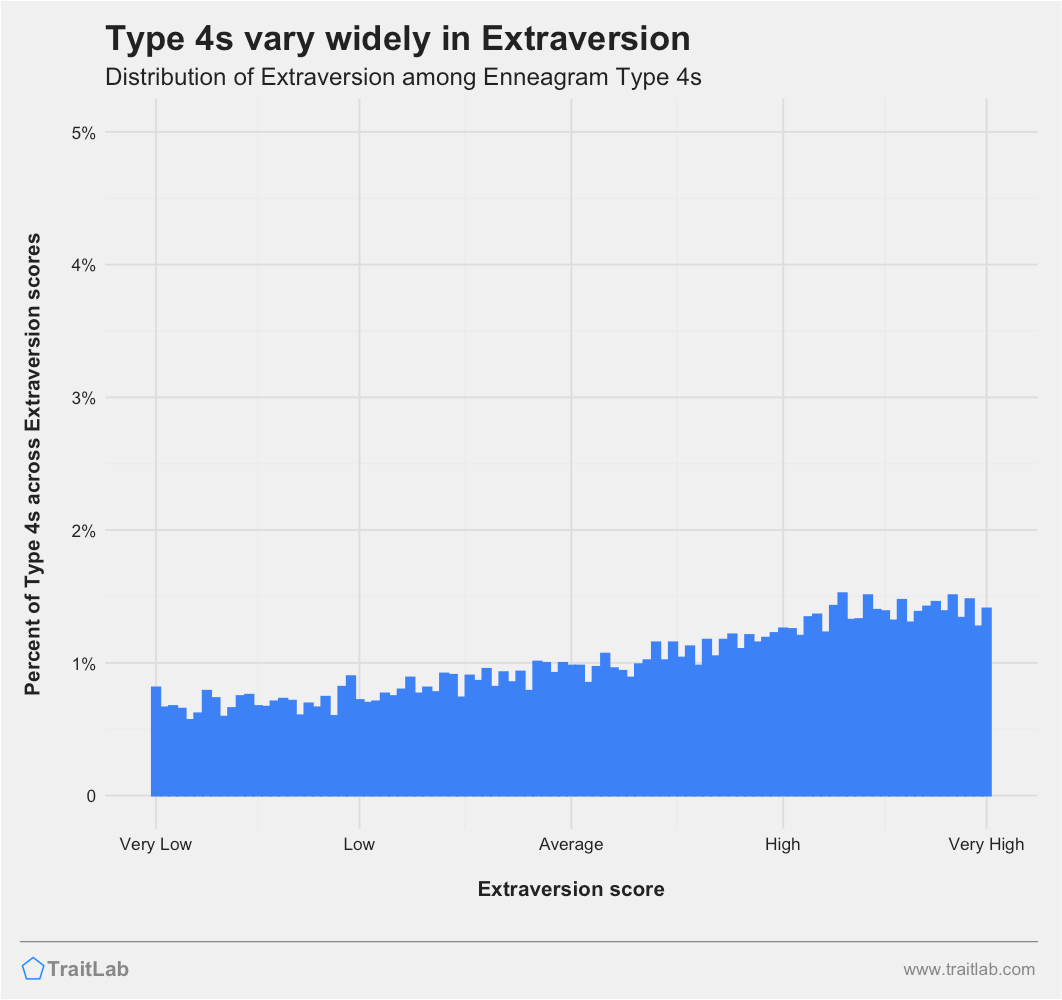
More extraverted Type 4s will naturally gravitate towards social engagement and generally show greater enthusiasm in social situations — smiling, laughing, and keeping the energy up and moving. They will be more likely to open up, share their point of view, and gently persuade others to see things their way.
More introverted Type 4s will seem more emotionally muted and reserved compared to their extraverted counterparts. They will act and react more subtly in social situations, and they will occasionally need to withdraw into solitary activities. They are more likely to sit back and listen, and act more passively around others.
Type 4s often score lower on Agreeableness and are more demanding.
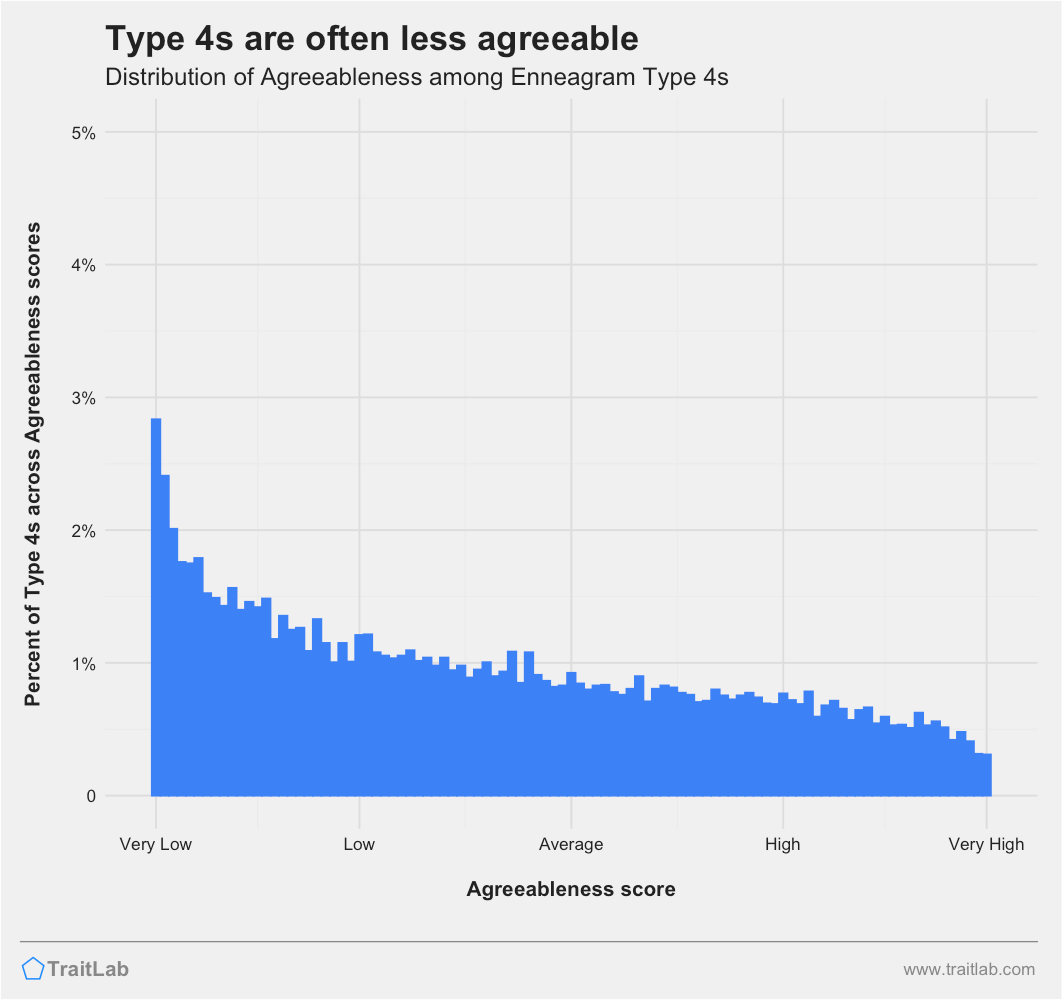
Agreeableness describes your interpersonal warmth, politeness, and empathy.
Like many Type 4, less agreeable (or more demanding) people are often less concerned with others when pursuing their own goals. They are more willing to create conflict or express disagreement across most situations and feel less discomfort during interpersonal disputes.
Highly agreeable people feel a deep need to maintain warm, friendly relationships and are naturally more hesitant to impose their will on others. They will be more considerate of how their actions impact others and try to reduce or resolve interpersonal conflicts when they arise.
Type 4s are more likely to fall on the high end of Neuroticism. Neuroticism describes our emotional volatility and variability. It is closely tied to our tendency to experience negative emotions: anxiety, anger, distress, and depression.
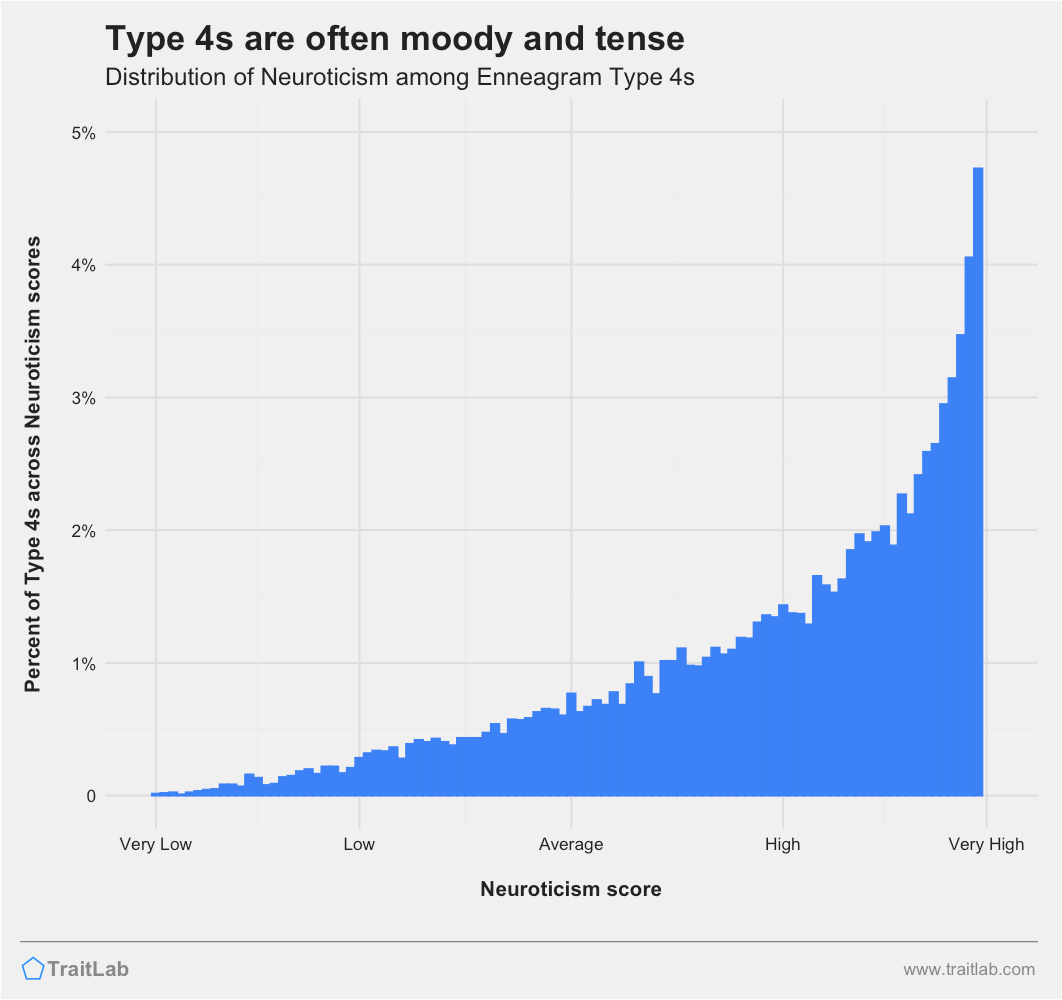
High Neuroticism is related to more frequent and dramatic mood swings and a general tendency to worry more often. More neurotic people are more irritable, have a shorter temper, and are more likely to dwell on negative experiences.
Low Neuroticism, or high Emotional Stability, is related to an overall decreased reactivity to stress, fewer and less intense experiences of negative emotions like anxiety and anger, and a more relaxed and easy-going temperament.
Most personalities can’t be described perfectly by a single Enneagram type.
However, with TraitLab’s Enneagram test, you can see which of the nine Enneagram types is most similar to your personality.
For comparisons between Type 4s and other Enneagram types, visit any of the type pairings below: